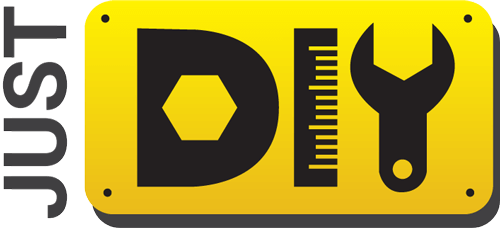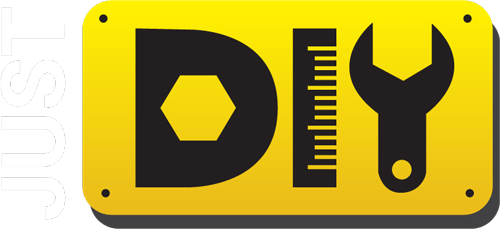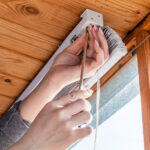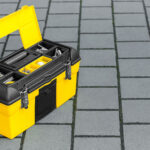DIY Electronics
As a tech enthusiast myself, I've witnessed the surging allure of DIY electronics in our ever-tech-dominated world. Whether you're fueled by curiosity, aching to dive into a new hobby, or just eager to cut costs on your tech gadgets, venturing into the realm of DIY electronics can be an incredibly fulfilling and enlightening experience.
This comprehensive guide is my way of extending a helping hand to fellow beginners, enabling you to kickstart your own DIY electronics journey. Together, we'll explore the indispensable tools, fundamental components, and the magic of basic circuitry, all while sparking your imagination with exciting project ideas. So, let's embark on this electrifying adventure and craft the future, one circuit at a time!
Why DIY Electronics?
Engaging in do-it-yourself (DIY) electronics presents a captivating opportunity to immerse yourself in the intricate workings of technology. When you embark on the journey of creating your own electronic devices and contraptions, you unlock a treasure trove of knowledge that delves deep into the inner mechanisms of these technological wonders.
This hands-on experience not only enriches your understanding but also empowers you with the ability to personalize and enhance your creations to align perfectly with your unique requirements.
Beyond the intellectual and creative satisfaction, DIY electronics also offer practical advantages, notably cost-effectiveness. Rather than relying solely on off-the-shelf products, which can sometimes come with a premium price tag, you can leverage your DIY skills to save money while tailoring your electronics precisely to your specifications.
This aspect makes DIY electronics particularly appealing for individuals looking to stretch their budgets without compromising on functionality and personalization. So, whether you're a curious tinkerer or a frugal tech enthusiast, the world of diy electronics circuits holds a wealth of possibilities waiting to be explored.
The Thrill of Creating Your Gadgets
Picture the exhilaration that courses through you as you meticulously piece together a device, starting from a stack of individual components, and watch it spring to life under your careful guidance. DIY electronics not only deliver this unmatched thrill but also offer an exceptional avenue for self-expression and creativity.
In the realm of DIY electronics, the spectrum of projects is boundless. You can start with elementary endeavors like crafting your own LED flashlight, gradually advancing to more intricate undertakings such as designing and programming an Arduino-based robot. The beauty of easy diy electronics projects lies in the fact that the only limitations you face are the boundaries of your own imagination and the depth of your technical skills.
This journey of creative electronics crafting encompasses a rich tapestry of experiences, from mastering soldering techniques to coding and circuit design. It's a journey that not only fuels your innate curiosity but also nurtures your problem-solving abilities, critical thinking, and technical prowess.
Beyond the tangible devices you create, it's the intangible sense of achievement, the fusion of artistry and engineering, and the boundless potential for innovation that make DIY electronics an endlessly captivating pursuit.

Getting Started
Essential Tools for DIY Electronics
Embarking on your DIY electronics journey requires a well-stocked arsenal of tools and equipment. Here's a comprehensive list to ensure you're fully prepared for your electronic adventures:
- Soldering Iron: A fundamental tool for connecting components and wires in your circuits. Invest in one with adjustable temperature settings for versatility.
- Multimeter: An indispensable device for measuring voltage, current, and resistance in your circuits, ensuring precision and troubleshooting capabilities.
- Wire Cutters and Strippers: Essential for neatly preparing and trimming wires, connectors, and components.
- Breadboard: This invaluable prototyping tool allows you to experiment and build circuits without soldering, facilitating quick modifications and testing.
- Soldering Station: For precise and controlled soldering, a soldering station with adjustable temperature settings and a stable stand is a must.
- Pliers and Tweezers: These tools are essential for handling small components, bending leads, and making delicate adjustments.
- Desoldering Pump/Wick: Mistakes happen, and these tools come to the rescue when you need to correct soldering errors or replace components.
- Safety Gear: Prioritize safety with essential gear including safety glasses to protect your eyes from solder splatter, an anti-static wrist strap to prevent electrostatic discharge, and a well-ventilated workspace to ensure a safe and comfortable environment.
Understanding Basic Components
To embark on your DIY electronics journey, it's crucial to grasp the roles and functions of key components. A firm understanding of these fundamental building blocks is essential for constructing circuits and breathing life into your electronic creations. Here, we delve deeper into these basic components:
- Resistors: These unassuming components are the gatekeepers of current flow within circuits. By offering resistance to the flow of electrical current, they control and regulate it, ensuring that other components receive the appropriate voltage.
- Capacitors: Think of capacitors as tiny energy reservoirs within your circuits. They store electrical energy and can release it when needed, making them indispensable for smoothing voltage, filtering noise, and timing in various applications.
- Diodes: Diodes act as electronic check valves, permitting current to flow in one direction while blocking it in the opposite direction. This property is pivotal in rectifying AC to DC voltage, protecting circuits from reverse polarity, and more.
- LEDs (Light Emitting Diodes): These luminous wonders transform electrical energy into visible light when current flows through them. LEDs are not only used for indicator lights but also add visual appeal to countless projects, from display panels to wearable tech.
- Transistors: As electronic amplifiers and switches, transistors are the gatekeepers of electronic signals. They can amplify weak signals, act as switches to control larger currents, and play a vital role in digital logic circuits.
- Integrated Circuits (ICs): These miniaturized marvels pack numerous electronic components onto a single chip. ICs can range from simple timers to complex microprocessors, offering a wealth of functionalities and simplifying circuit design.
- Resistor Networks and Potentiometers: For precise resistance adjustments, potentiometers (variable resistors) and resistor networks come into play, allowing you to fine-tune circuit parameters.
Safety First
Handling Electronics Safely
Engaging in DIY electronics offers countless opportunities for creativity and innovation, but it's imperative to prioritize safety throughout your projects. Here are comprehensive safety guidelines to ensure your well-being and the integrity of your electronic endeavors:
- Power Disconnection: Before delving into any circuit work, always disconnect power sources. This prevents accidental shocks, protects your components, and ensures your own safety.
- Environmental Conditions: Avoid working on electronics in wet or damp conditions. Moisture can lead to short circuits, component damage, and potential electrical hazards.
- Anti-Static Precautions: Store electronic components in anti-static bags to safeguard against static discharge, which can damage sensitive components. Utilize an anti-static wrist strap to discharge any static buildup from your body before handling components.
- Solder Safety: Be cautious when working with lead-based solder. Wash your hands thoroughly after handling it to prevent lead contamination. If possible, consider using lead-free solder as a safer alternative.
- Soldering Iron: Never leave a hot soldering iron unattended. When not in use, place it on a heat-resistant surface or use a stand to prevent accidents and burns.
- Ventilation: Work in a well-ventilated area or consider using a fume extractor when soldering. Soldering fumes can be harmful when inhaled.
Electrical Safety Precautions
Working with household current or higher voltage electronics demands a heightened level of caution. To ensure your safety and the integrity of your projects, consider these additional electrical safety precautions:
- Overload Protection: Incorporate circuit breakers or fuses into your designs to safeguard against overloads and prevent electrical fires or equipment damage. These protective devices act as fail-safes by interrupting the flow of current when thresholds are exceeded.
- Insulation Measures: When dealing with exposed wires, prioritize insulation. Utilize heat shrink tubing or electrical tape to shield and protect wires from physical damage, short circuits, and unintended contact with conductive surfaces.
- Enclosures: High-voltage components should always be enclosed in appropriate enclosures. These enclosures serve a dual purpose: they safeguard against accidental contact, reducing the risk of electrical shocks, and shield against external elements like dust and moisture that can compromise safety and performance.
- Non-Live Circuit Work: Whenever possible, avoid working on live circuits. De-energize circuits by disconnecting power sources and confirming that no residual voltage remains. Implement lockout-tagout procedures, if applicable, to prevent inadvertent re-energization while you work.
- Grounding: Ensure proper grounding of equipment and circuits to prevent electric shock hazards. Grounding provides a safe discharge path for excess electrical energy in the event of a fault.
- Voltage Ratings: Always verify the voltage ratings of components and equipment to ensure compatibility and avoid overloading. Mixing components with different voltage ratings can lead to catastrophic failures.
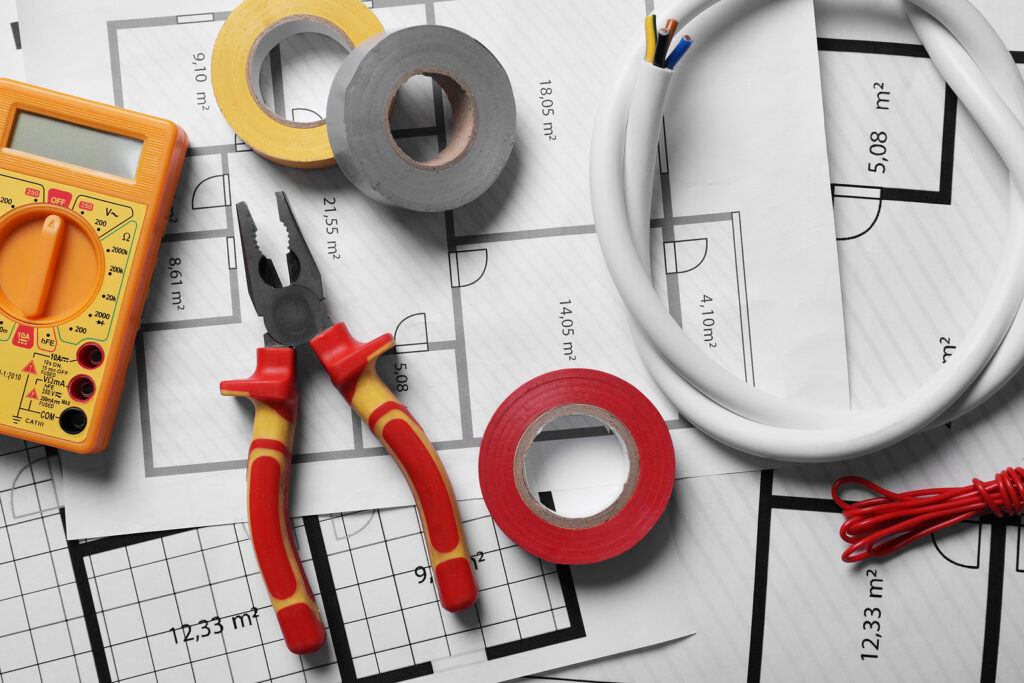
Understanding Circuits
A thorough grasp of circuits forms the bedrock of DIY electronics. So, let's delve deeper into the world of circuits and their fundamental configurations, shedding light on essential concepts.
What Is a Circuit?
A circuit is essentially a closed loop that facilitates the flow of electricity. It comprises several key components, including a power source, conductive pathways (typically wires or traces on a PCB), and various components connected together to create a functional device. Understanding the dynamics of circuits is pivotal for anyone venturing into the realm of best diy electronics projects.
Series vs. Parallel Circuits
Circuits can be classified into two primary configurations: series and parallel, each with its own unique characteristics and applications.
- Series Circuits: In a series circuit, components are connected end-to-end, forming a single path for the flow of electric current. This configuration demands that current passes through each component in succession. If one component in a series circuit fails or is interrupted, the entire circuit may cease to function. Series circuits are commonly used in situations where uniform current distribution is crucial, such as in string lights.
- Parallel Circuits: In contrast, parallel circuits involve components connected in branches, offering multiple pathways for electric current to follow. This design allows each component to operate independently of the others. If one component fails in a parallel circuit, the remaining components can continue functioning undisturbed. Parallel circuits are favored for applications requiring redundancy or devices where selective control is necessary, like household electrical systems.
Breadboarding: The Invaluable First Step
Before committing to permanent soldered connections, breadboarding stands as a crucial preliminary step in circuit design. Breadboards provide a platform for prototyping your circuit concepts with ease and flexibility. These boards feature a grid of holes where you can insert and connect components and wires, allowing you to experiment, test, and refine your designs without irreversible commitments.
Basic Electronic Components
As you embark on your journey into the world of DIY electronics, familiarizing yourself with fundamental electronic components is essential. These components serve as the building blocks of your creations and form the basis of countless electronic circuits. Let's dive deeper into the characteristics and applications of these basic components:
Resistors: The Building Blocks
Resistors are passive components that, as the name suggests, resist the flow of electric current. They play a pivotal role in limiting current, dividing voltage, and establishing operating conditions within circuits. Resistors are typically identified by their resistance value, measured in ohms (Ω), which determines the extent to which they impede current flow.
Capacitors: Storing Electrical Energy
Capacitors are energy-storage devices that can store and release electrical energy when required. They are indispensable for tasks such as smoothing out voltage fluctuations, filtering noise, and timing circuits. Capacitors come in various types, each tailored to specific applications, including electrolytic capacitors, ceramic capacitors, and tantalum capacitors.
Diodes: One-way Traffic Control
Diodes are semiconductor devices that permit the flow of electric current in only one direction, effectively acting as electrical check valves. They find widespread use in rectifying alternating current (AC) to direct current (DC) and safeguarding circuits from reverse voltage, making them vital for power supplies and protection.
LEDs: Lighting Up Your Projects
Light Emitting Diodes (LEDs) are semiconductor components that emit light when an electric current passes through them. Available in an array of colors, LEDs are commonly employed for indicators, displays, and lighting in DIY electronics projects. They bring visual appeal and functionality to your creations.
Transistors: The Switching Powerhouse
Transistors are versatile semiconductor components renowned for their ability to amplify, switch, and process electronic signals. They come in various types, including Bipolar Junction Transistors (BJTs) and Field-Effect Transistors (FETs), each offering distinct advantages. Transistors are the heart of many electronic devices, from audio amplifiers to digital logic circuits.
Integrated Circuits (ICs): Miniature Brains
Integrated Circuits (ICs) are miniature marvels that house multiple electronic components, such as transistors, resistors, and capacitors, within a single chip. These complex chips serve as the brains of electronic devices and microcontrollers, enabling sophisticated functionalities. From microprocessors to memory chips, ICs are the foundation of modern electronics.
Soldering Skills
Soldering is a fundamental skill in DIY electronics, enabling you to create secure and reliable connections between electrical components. To excel in soldering, you'll need a soldering iron equipped with adjustable temperature settings. Here, we'll delve into the essential techniques and tips to elevate your soldering prowess:
Soldering Techniques:
- Tinning: Begin by applying a thin layer of solder to the tip of your soldering iron. This process, known as tinning, enhances heat transfer and ensures better solder flow.
- Heat the Joint: Position the soldering iron so that it makes simultaneous contact with both the component lead and the PCB (Printed Circuit Board) pad you intend to join. Ensure good thermal contact to facilitate efficient solder melting.
- Apply Solder: Gently feed solder wire onto the joint, not directly onto the soldering iron. As the solder melts, it should flow smoothly and evenly, forming a strong connection between the components.
- Cool and Solidify: Once the solder has thoroughly covered the joint and it appears smooth and shiny, allow it to cool and solidify naturally. Avoid moving or disturbing the joint during this crucial phase to ensure a stable connection.
Tips for Clean Soldering:
- Correct Temperature: Use the appropriate soldering iron temperature for the components you're working with. Delicate components may require lower temperatures to prevent damage, while larger components may need higher temperatures for effective soldering.
- Clean Tip: Keep the tip of your soldering iron clean by regularly wiping it on a damp sponge or brass wire cleaner. A clean tip ensures better heat transfer and prevents oxidation.
- Avoid Overheating: Be cautious not to overheat components, as excessive heat can lead to damage, especially for sensitive electronic parts. Apply heat only for the necessary duration.
- Trim Excess Leads: After soldering, trim any excess component leads to prevent short circuits and ensure a neat and tidy appearance. The result should be smooth, shiny solder joints.
- Practice: Soldering is a skill that improves with practice. Start with simple projects and gradually work your way up to more complex circuits to hone your soldering techniques.
- Ventilation: Work in a well-ventilated area or consider using a fume extractor when soldering. Soldering fumes can be harmful when inhaled.
DIY Electronics Projects
Embarking on a journey into the world of DIY electronics offers a thrilling opportunity to unleash your creativity and technical prowess. Whether you're a beginner looking to build your skills or an intermediate enthusiast seeking more complex challenges, there are projects tailored to your level of expertise.
Beginner-Friendly Projects:
- LED Flashlight: Craft a basic handheld flashlight using a simple circuit comprising an LED, resistor, and a small battery. This project introduces you to the fundamentals of circuit design and soldering.
- Blinking LED: Design a circuit that makes an LED blink at different rates, providing insights into basic timing and control.
- Light Sensor: Construct a circuit featuring a light sensor that automatically turns on an LED when ambient light levels decrease and turns it off when they increase. This project delves into sensor integration and conditional logic.
- Simple Alarm: Create a straightforward alarm system using a buzzer and a switch, offering you hands-on experience in building an alert mechanism.
Expanding Your Skills: Intermediate Projects:
- Arduino Weather Station: Elevate your expertise by designing a weather monitoring system using an Arduino microcontroller, various sensors (e.g., temperature, humidity, barometric pressure), and an LCD display. This project involves sensor interfacing and data visualization.
- Remote-Controlled Car: Challenge yourself with the construction of a remote-controlled car, employing microcontrollers like Arduino or Raspberry Pi for precise control. Explore motor control, wireless communication, and advanced programming.
- Digital Thermometer: Build a digital thermometer with a temperature sensor (such as a thermistor or DS18B20) and a digital display. This project allows you to delve deeper into sensor calibration and digital data processing.
- Voice-Controlled Lights: Take on a cutting-edge project that enables voice control of lights using a microcontroller (e.g., Arduino, Raspberry Pi) and voice recognition technology. This endeavor will introduce you to speech processing and home automation concepts.
Troubleshooting and Problem Solving
Common Issues and Solutions:
- Cold Solder Joints: If you suspect a cold solder joint, reheat and reflow the solder to establish a proper connection. Ensure that the solder flows smoothly and forms a strong bond between the components and the circuit board.
- Short Circuits: Check for unintended connections between wires or components, which can lead to short circuits. Insulate exposed wires or leads, correct miswired connections, and use insulating materials to prevent further shorts.
- Component Reversal: Ensure that components are oriented correctly according to the schematic or reference design. Reversing components can lead to incorrect functionality or damage.
- Burned Components: If you discover burned or damaged components, replace them and investigate the root cause of overheating. Factors such as incorrect voltage, excessive current, or component failure may contribute to this issue.
- Voltage Drops: Investigate the power supply and ensure it meets the circuit's requirements. Voltage drops can occur due to insufficient power, damaged power sources, or excessive current draw. Consider using voltage regulators or appropriate power management techniques to address this.
Effective Debugging Techniques:
- Visual Inspection: Conduct a meticulous visual inspection of your circuit. Look for loose connections, damaged components, or incorrect wiring. Often, issues are readily apparent upon visual examination.
- Use a Multimeter: Employ a multimeter to measure voltage, current, and resistance at key points in your circuit. These measurements can help identify issues such as open circuits, short circuits, or unexpected voltage levels.
- Isolate Sections: Divide your circuit into manageable sections and test each section separately. This approach allows you to pinpoint the location of the problem, making it easier to identify and resolve.
- Review Your Schematic: Compare your physical circuit to the schematic or reference design. Ensure that components are correctly placed and connected as per the intended design. Discrepancies between the schematic and the actual circuit are often the source of issues.
- Seek Assistance: Don't hesitate to seek help from online forums, communities, or fellow enthusiasts when you encounter challenges beyond your expertise. Experienced individuals can provide valuable insights and guidance.
Conclusion
In my personal journey through the realm of DIY electronics, I've discovered a world teeming with excitement and innovation. Crafting electronic devices from scratch, exploring intricate circuitry, and seeing my creations come to life has not only deepened my understanding of technology but has also ignited my creativity and problem-solving skills. DIY electronics offer the unique joy of turning components into functional gadgets and the satisfaction of mastering soldering techniques.
Throughout this voyage, I've learned the importance of safety, honed my soldering skills, and delved into the intricacies of fundamental electronic components. From simple LED projects to complex weather stations, each endeavor has expanded my knowledge and pushed my boundaries. Troubleshooting, in particular, has taught me that it's not just about finding problems; it's a pathway to gaining a profound understanding of circuitry.
I encourage all enthusiasts, whether beginners or seasoned hobbyists, to embrace diy electronics projects for beginners for the endless possibilities, boundless creativity, and the personal growth it offers. So, pick up that soldering iron, gather your components, and embark on your own electrifying adventure into this captivating world – it's a journey of knowledge, creation, and innovation waiting to be explored.
Sources
https://www.ncbi.nlm.nih.gov/pmc/articles/PMC6369552/
https://direct.mit.edu/books/oa-monograph/5589/Art-DIY-Electronics
